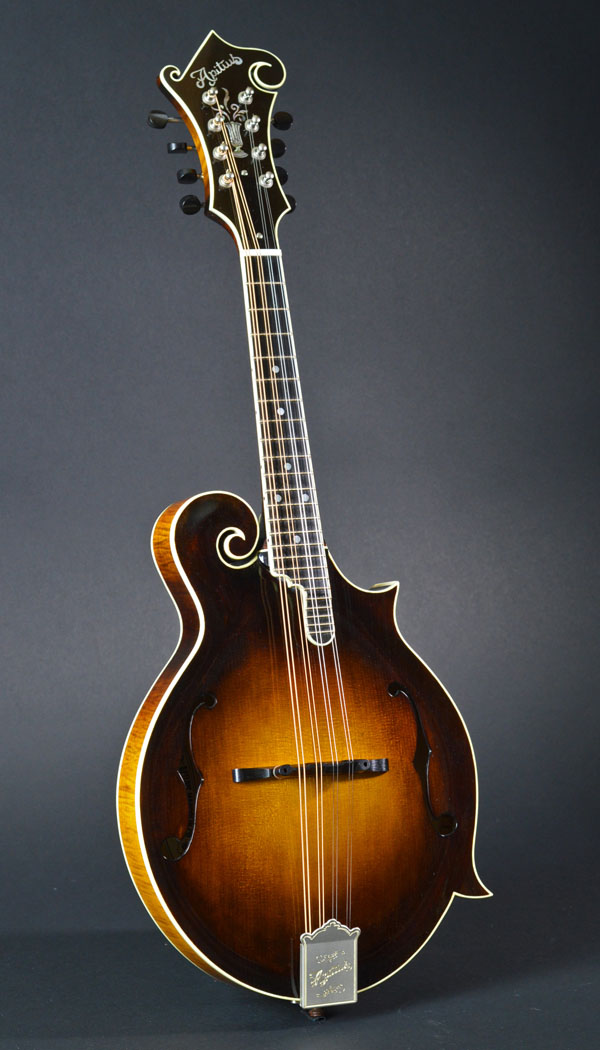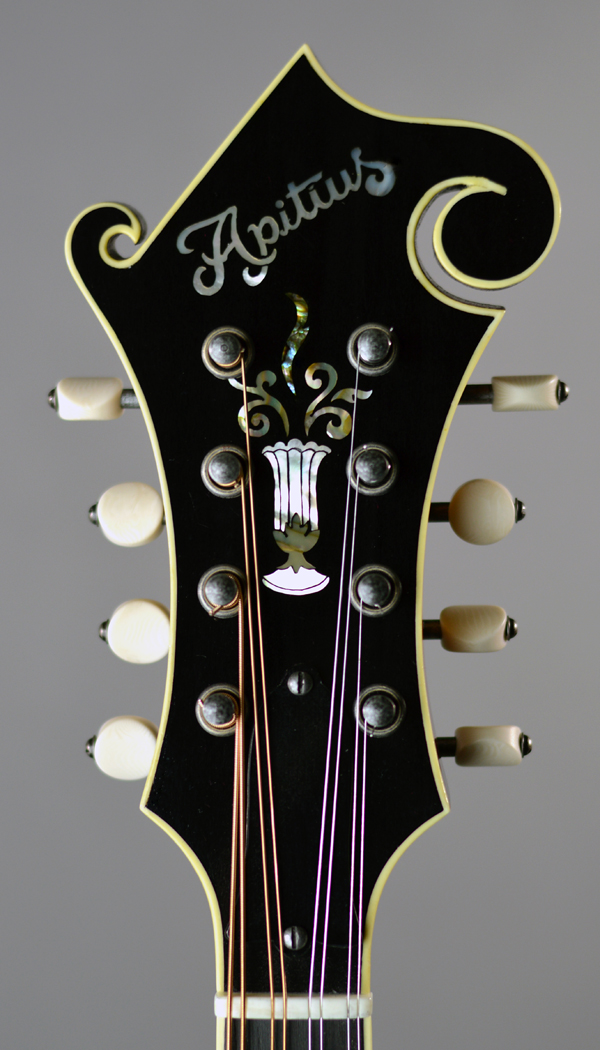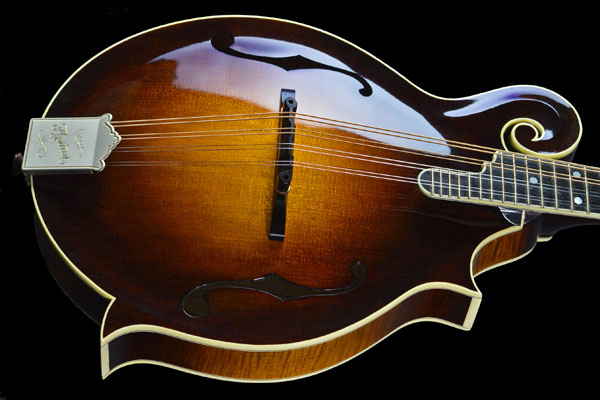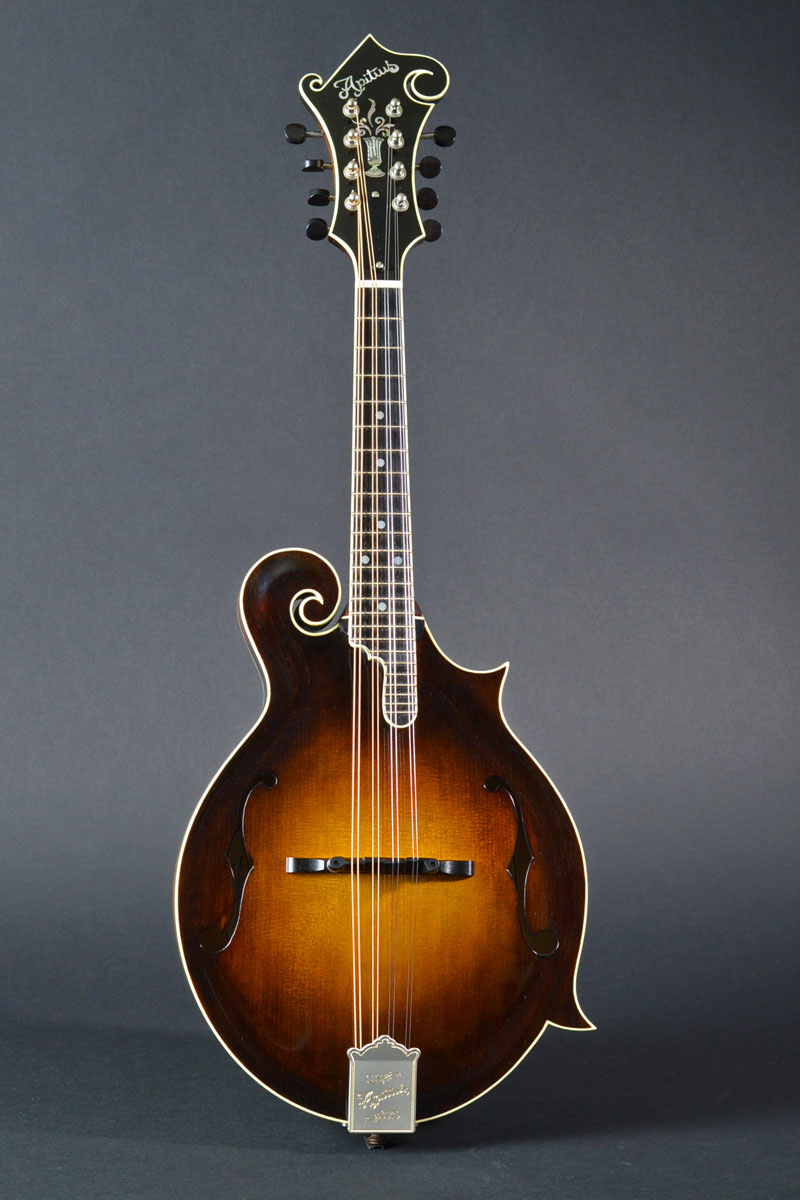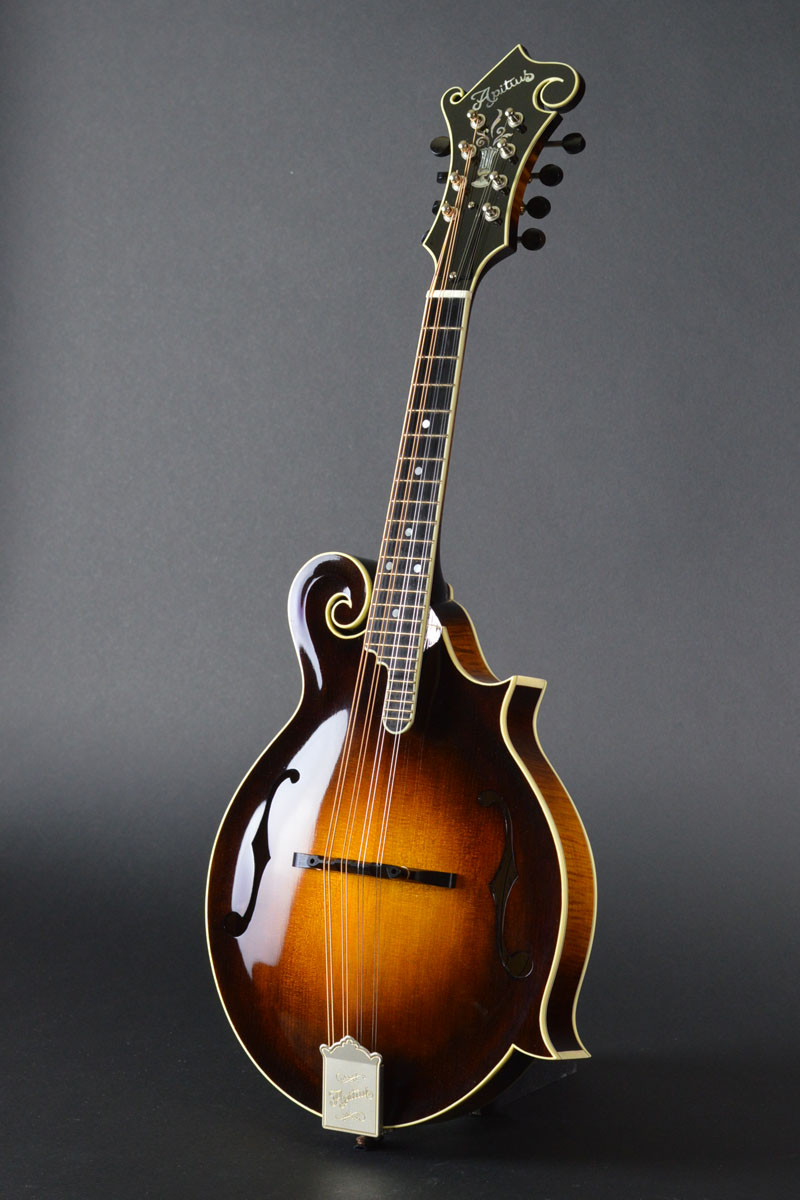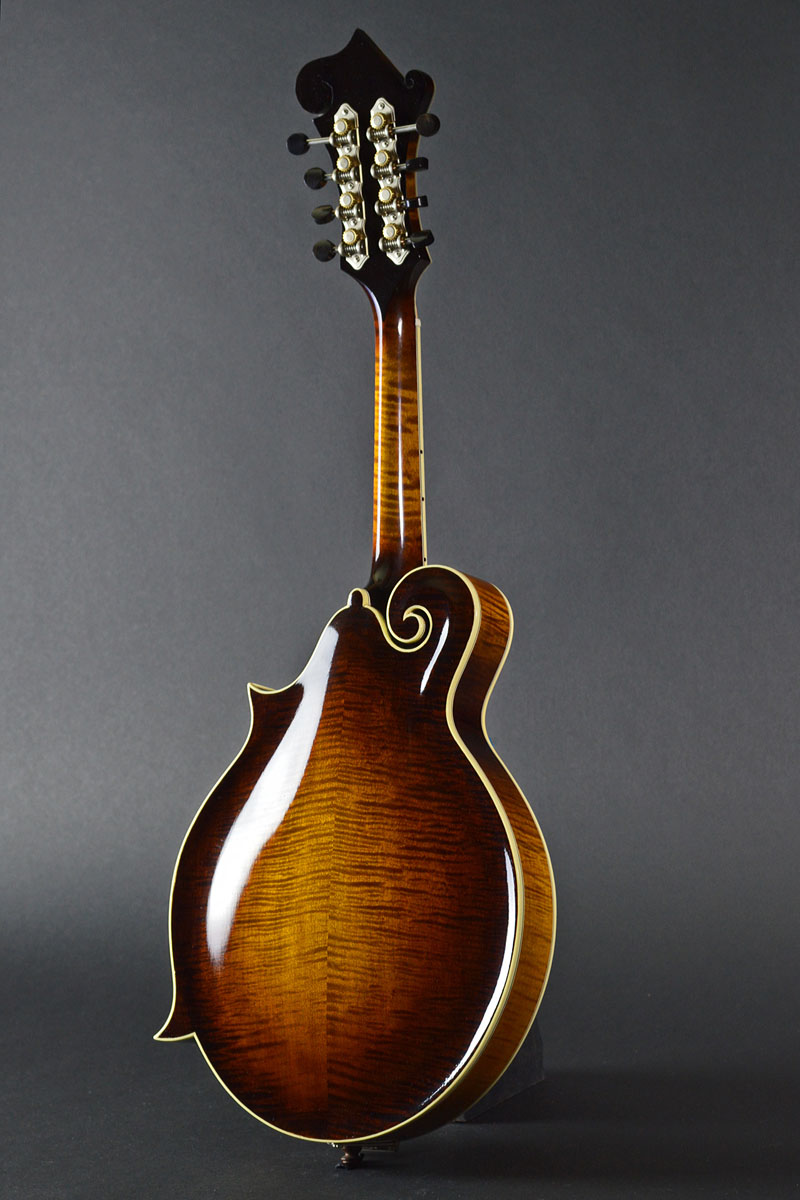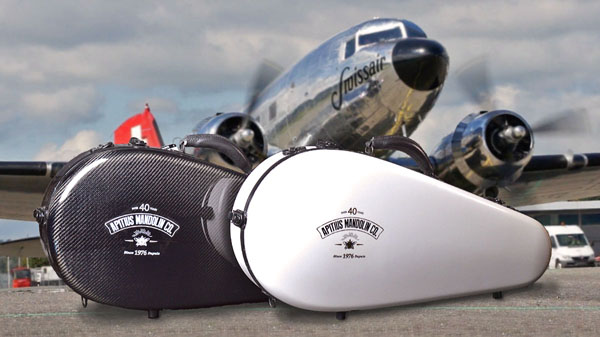The Rosine is shown here with Cremona Brown finish and optional ebony buttons.
Rosine Standard Features
- Top plate of finest grade quartersawn spruce, hand carved and tap tuned
- Back plate of highly figured maple, hand carved and tap tuned
- Sides of highly figured maple
- Neck of highly figured maple
- Angle cut and tapered peghead**
- Hand sawn Apitius pearl shell flowerpot inlay on headstock*
- Peghead veneer of dyed pearwood over 4 plys of alternating maple veneers on face with single ply of dyed pearwood on back
- Fingerboard of genuine ebony with a standard, conical (compound) radius of 7 1/4” (190mm) to 12" (305mm)
- Mother-of-pearl position markers
- "Side bound" throughout (black/white binding lines on all side surfaces)
- Schaller™ GrandTune® tuning machines with 18:1 gearing
- Customised James™ tailpiece
- Width at nut: 29mm (1 5/32”)
- Scale length: 355mm (14")
- Adjustable truss rod (double rod design does not add compression force to the neck)
- Hand applied stain and shading in choice of "Cremona Brown" or "Black Cherry"
- Spirit varnish finish applied by hand in the traditional French polish method
- Hot hide glue construction throughout.
- Custom fitted, Hoffee™ carbon fiber case
- Limited Lifetime Warranty
** Angle-cut and tapered peghead with black dyed pearwood veneer front and back. Apitius flowerpot inlay of hand-cut and hand-engraved pearl shell. (Shown with optional Golden Age® tuners)
Hand applied (not sprayed) sunburst makes each instrument truly unique and gives it an authentic vintage vibe.
The understated artistry of the Rosine™ model belies its rich and powerful sonic character. This is the essence of a bluegrass mandolin. Named after the birthplace of the “Father of Bluegrass” the Apitius Rosine™ model pays homage to the contributions and achievements of the late Bill Monroe. It is appointed much like Mr. Monroe’s beloved F-5, from its “side bound” binding throughout to the hand applied “Cremona Brown” vignette shading. The majority of mandolins produced since the 1930s have been shaded using spray techniques. Prior to that, the shading was applied by hand. To more closely replicate the look of the original 1920s F-5s, my stains are applied by hand rubbing the stain directly on the wood. Likewise, the spirit varnish finish is also hand applied using the French polish method. French polishing not only produces an extremely clear and luminous finish, it allows for a very thin film thickness that is virtually acoustically transparent, giving the instrument a vibrancy and resonance not possible by production finishing methods.
Click to enlarge the above images.
Includes Custom fitted Hoffee™ carbon fiber case with "Apitius Mandolin Co." logo
 RGB.jpg)
.jpg)
